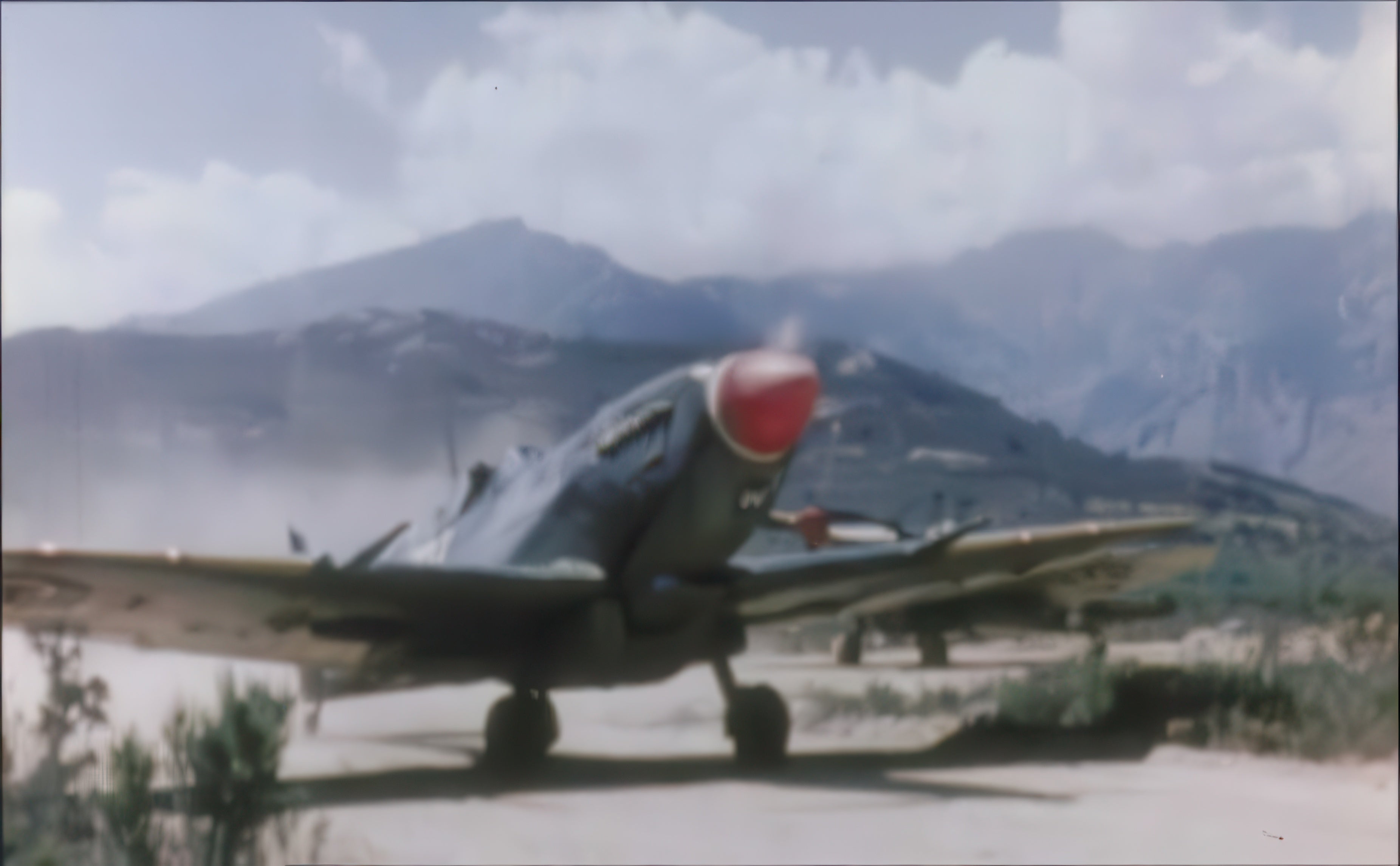This fine art print by artist Craig Tinder captures the iconic Spitfire Mk IXe MJ730 in action during WWII. What makes this piece truly special is the inclusion of an authentic fragment from the Spitfire's original wooden propeller, carefully mounted directly onto the canvas. This art piece was created in partnership with the Military Aviation Museum, Virginia Beach, VA where Spitfire MJ730 is restored in flying condition.
 Artist Craig Tinder with Spitfire Mk. IXe MJ730 artwork at Aces In Action - Orlando, Florida
Artist Craig Tinder with Spitfire Mk. IXe MJ730 artwork at Aces In Action - Orlando, Florida
Details About the RELIC
This authentic artifact originated from a segment of the propeller belonging to the British Supermarine Spitfire Mk. IXe MJ730. In 2015, the aircraft suffered a propeller tip strike, resulting in significant damage that rendered the propeller beyond repair. Through a collaborative effort with the Military Aviation Museum in Virginia Beach, Virginia, and Aces In Action, the propeller will be used to support a number of Spitfire art pieces. The propeller, constructed from laminated spruce wood, enhanced with fiberglass, an aluminum edge strip, and a rubberized leading edge, showcases the pinnacle of piston-engine technology.
 Slices of MJ730 laminated spruce propeller - note the running bond pattern for strength
Slices of MJ730 laminated spruce propeller - note the running bond pattern for strength
 Posterior side of MJ730 propeller
Posterior side of MJ730 propeller
 Anterior side of MJ730 propeller
Anterior side of MJ730 propeller
 Broken tip of MJ730 propeller. Note the rubberized leading edge
Broken tip of MJ730 propeller. Note the rubberized leading edge
The Story Behind the Print
December 1943, Spitfire Mk. IXe MJ730 was produced at Castle Bromwich, UK, and shipped to North Africa, where she first served with 417 Sqn, RCAF, and participated in the Italian campaign, including the Allied landings at Anzio.
Transferred in 1944 to No. 154 Squadron, RAF, Corsica in support of the invasion of southern France, she was filmed by William Wyler for the movie "Thunderbolt." Transferred again on 9 October 1944 to No. 32 Squadron, RAF in Greece, Squadron Leader George Silvester humorously had a "?" painted as its individual code, dubbing her "The CO's Query."
After later serving with the Italian Air Force, MJ730 ended up in Israeli service. Discovered serving as playground equipment in Kibbutz Kabri near the Lebanese border, MJ730 was recovered for restoration in 1978. This aircraft, which flew over 100 combat missions during World War II, has been restored to flying status and proudly bears one of her original paint schemes from her rich service history.
 MJ730 as seen in 1945 in William Wyler's short documentary "Thunderbolt"
MJ730 as seen in 1945 in William Wyler's short documentary "Thunderbolt"
 Keegan Chetwynd (Director - Military Aviation Museum) and Craig Tinder (Artist)
Keegan Chetwynd (Director - Military Aviation Museum) and Craig Tinder (Artist)

MJ730 photographed and measured by Artist Craig Tinder in preparation for initial sketches
Learn more about The Legacy of Spitfire MJ730 and George F. Silvester, Click Here
To purchase or see similar items, visit here.
Commissioned by Museums, Treasured by Collectors





Share:
World War II's Transformative Influence on Civil Aviation
Blue Angels Aircraft Evolution: A Historical Showcase